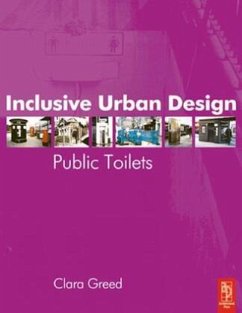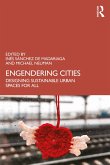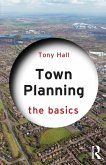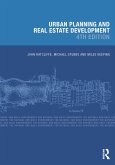This is a unique text providing both design guidance and policy direction for the provision and design of public toilets covering city-wide, district-level and site-specific principles. It highlights the role of urban design in reversing the trend of inadequate toilet provision, and sets out guidelines for design which meets both user need and provider requirements.
Greed presents the fundamental principle that toilets should not be dealt with in isolation from mainstream urban policy, but that they should be seen as a serious core component in both strategic urban policy and local area design. She argues toilets are valuable townscape features in their own right as manifestation civic pride and good urban design - essential architectural components which add to the quality and viability of an area.
Although a range of design guidance on toilets exists there is still considerable dissatisfaction with the end product in terms of building design, levels of provision, location, safety, layout, DDA requirements and accessibility. By outlining user demands and provider constraints, Greed shows that it is essential for architects to have an informed understanding and practical knowledge of toilet issues when working with public and private sector providers.
Examples of toilet architecture from other countries, and policies from different cultural settings, are included for comparative purposes to invigorate UK perspectives.
Greed presents the fundamental principle that toilets should not be dealt with in isolation from mainstream urban policy, but that they should be seen as a serious core component in both strategic urban policy and local area design. She argues toilets are valuable townscape features in their own right as manifestation civic pride and good urban design - essential architectural components which add to the quality and viability of an area.
Although a range of design guidance on toilets exists there is still considerable dissatisfaction with the end product in terms of building design, levels of provision, location, safety, layout, DDA requirements and accessibility. By outlining user demands and provider constraints, Greed shows that it is essential for architects to have an informed understanding and practical knowledge of toilet issues when working with public and private sector providers.
Examples of toilet architecture from other countries, and policies from different cultural settings, are included for comparative purposes to invigorate UK perspectives.
'Hopefully, this book will inspire architects and city planners to work with industrial designers in building better toilets that benefit the public and increase civic pride. But Inclusive Urban Design: Public Toilets is a great read for anyone interested in architecture, urban planning and livability.'
Powells.com Staff Pick
'What do you mean, you don't want to read about public toilets? If you are under the impression that this is a boring book devoted to the arse-end of urban design then you're sorely mistaken. Chapter Six: Medical Perspectives - incompetence or incontinence? is a must read... On a serious note, it's brilliantly written - lots of sartorial humour in here surprisingly - and very informative.'
FX Magazine
Powells.com Staff Pick
'What do you mean, you don't want to read about public toilets? If you are under the impression that this is a boring book devoted to the arse-end of urban design then you're sorely mistaken. Chapter Six: Medical Perspectives - incompetence or incontinence? is a must read... On a serious note, it's brilliantly written - lots of sartorial humour in here surprisingly - and very informative.'
FX Magazine








